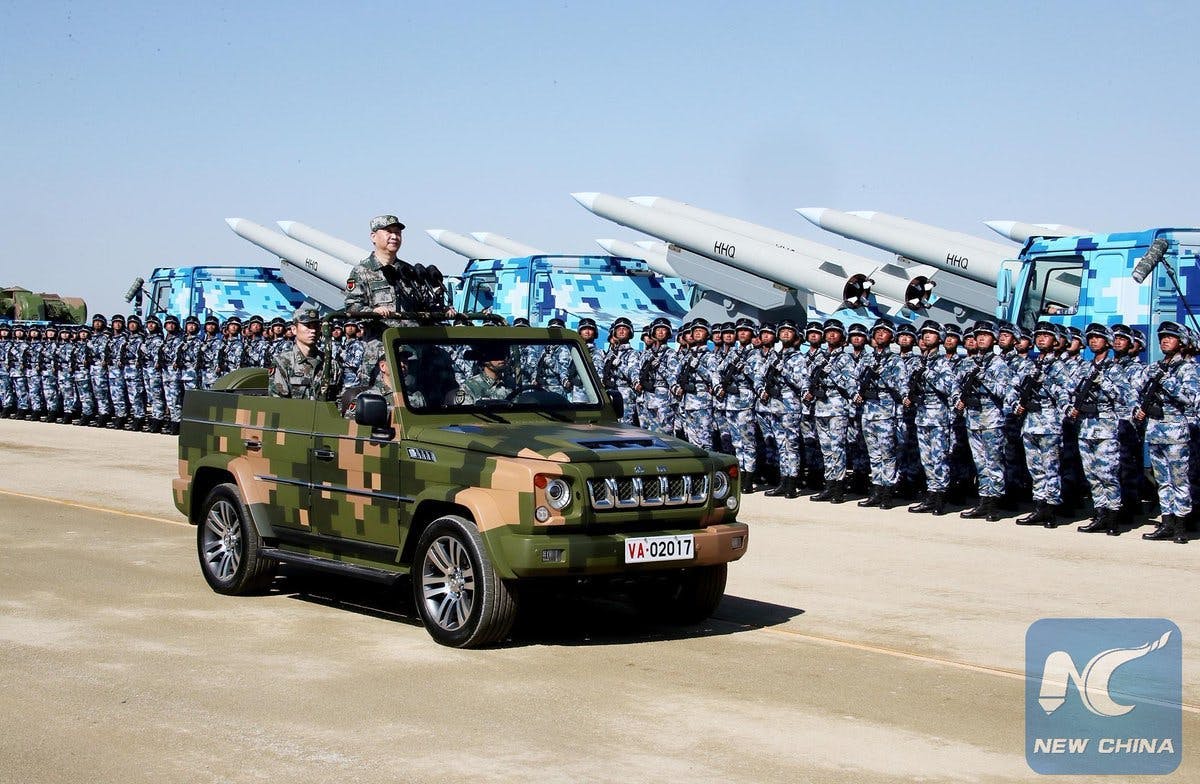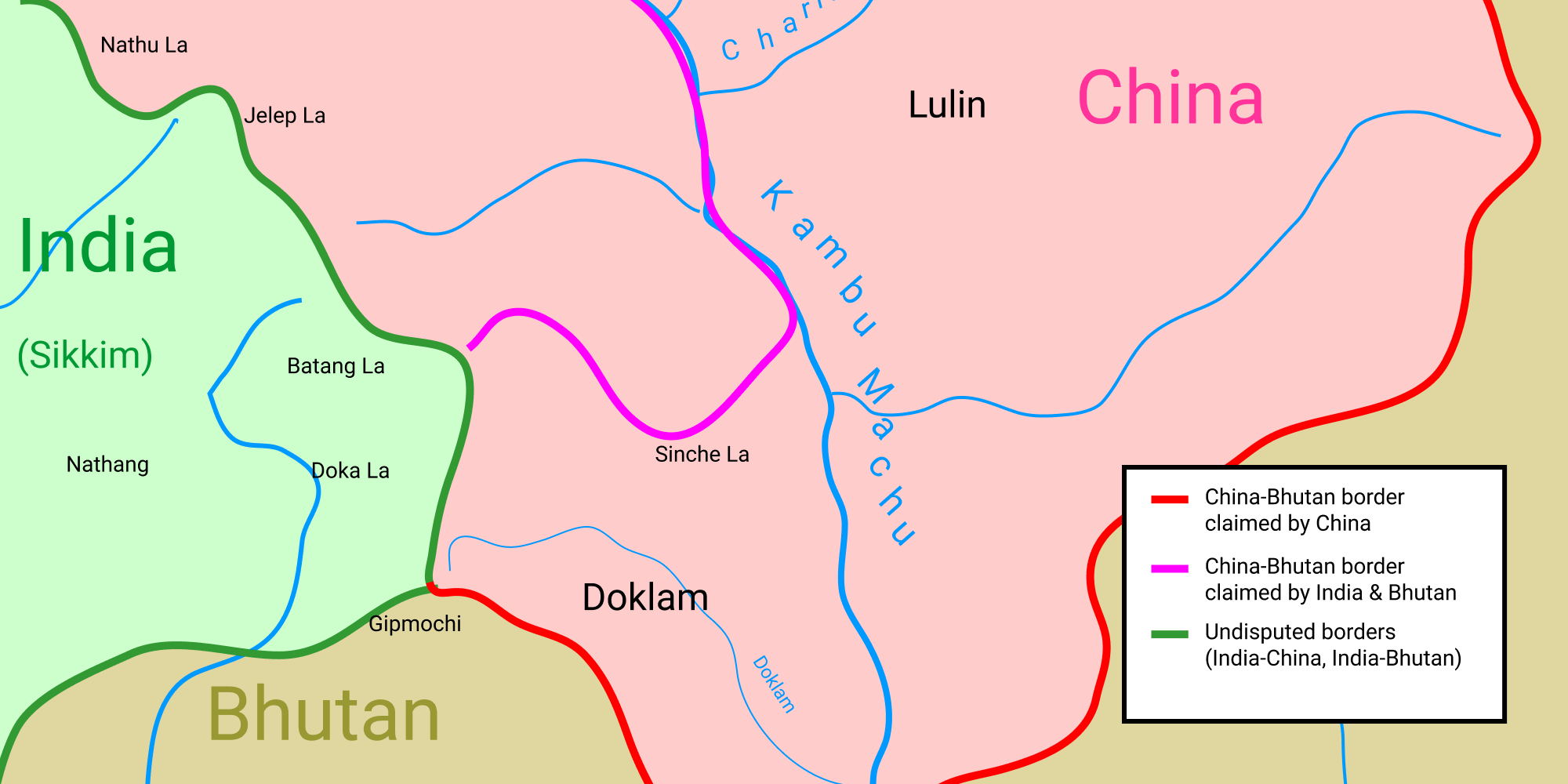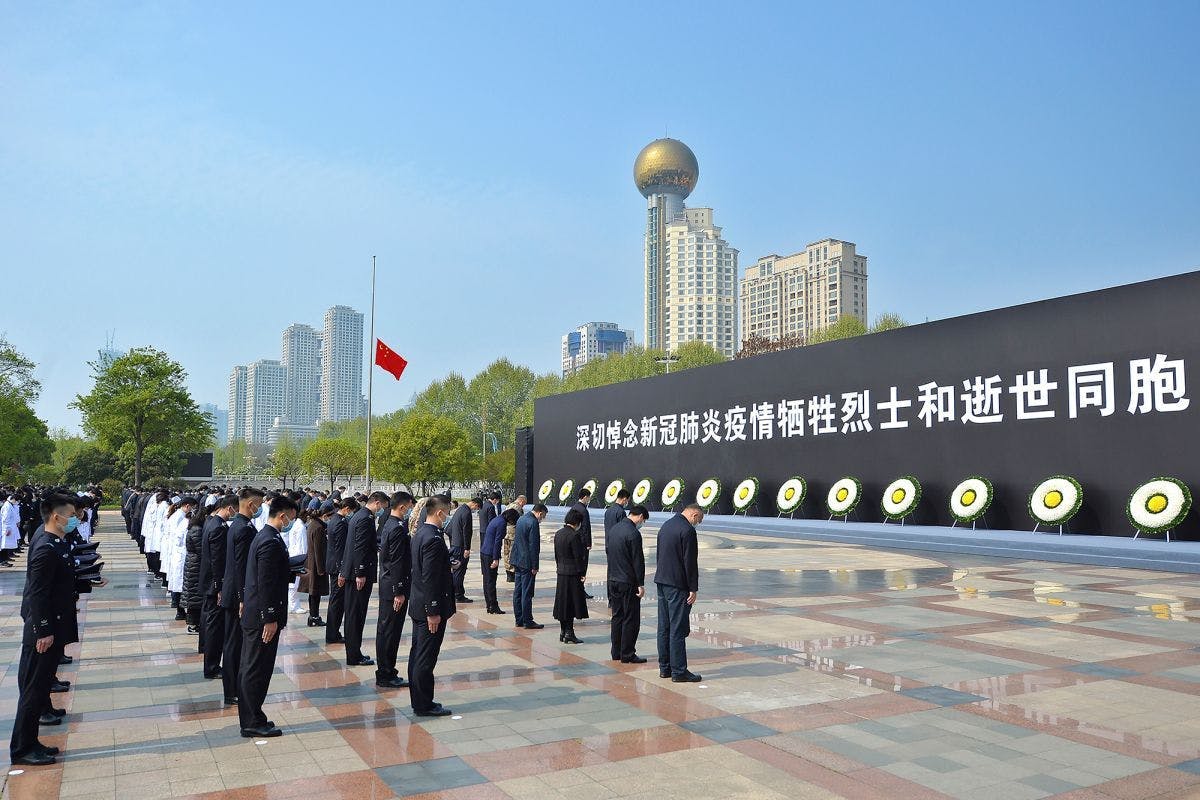Xi Jinping: Communist Party’s absolute leadership over army

China on Sunday held the first-ever Army Day parade to celebrate the 90th anniversary of the People’s Liberation Army (PLA).
The venue was a remote Zhurihe Combined Tactics Training Base in northern China’s Inner Mongolia Autonomous Region, 400km from Beijing.
12,000 PLA troops took part in the parade. 100-plus planes flew overhead and 600 types of weapons were on display, nearly half of which were shown for the first time in public.
The parade was carried live on state television and social media platforms like Periscope.
In a camouflage dress and a field cap, Chinese President Xi Jinping inspected troops in combat garb, not dress uniforms, in various formations from an open-top military jeep.
Such was the secrecy that the long-anticipated parade was only officially announced a day before on Saturday.
What did this 90th anniversary parade convey to the world, or China itself?
The first objective was to convey to the Chinese nation that China is not just an economically superior country, it has a military might that can contrast with any world power, particularly the US. China’s 2 million-strong armed forces are the largest in the world. By GDP ($12 trillion), China is world’s second largest and by GDP PPP ($23 trillion), number 1 economy in the world.
Xi has frequently mentioned his ‘China Dream’ to restore China to a leadership position in international affairs with a matching modern military force.
https://twitter.com/QuickTake/status/1035243323504709632
31 August 2018: President Xi Jinping orders the country’s military to get out of the kindergarten and real-estate businesses and focus on fighting. – Bloomberg
The second message went to Washington DC. US President Trump recently had been critical of China for its backing of North Korea. Without naming the US and Trump, Xi sent a message that China cannot be bullied on this issue.
Unlike the previous military parades which were held in Beijing, choosing a desert training venue was meant to tell the US that China’s answer to America’s Fort Irwin National Training Centre in Mojave Desert in northern San Bernardino County in California is finally here. On show was the J-20, China’s newest-generation stealth fighter, which could rival US military’s F-22 or F-35.
The China’s goal is: surpass the US in regional and global influence militarily.
The third message was for the military itself: transform yourself into an elite force capable of projecting power overseas, become a technologically-proficient lean machine, be more compact and responsive, and less reliant on sheer troop numbers. Once labelled as a corrupt bureaucracy with little combat experience, PLA has undergone some serious reform and an ambitious modernisation program in these years.
The troop morale was addressed too. In the 2015 Victory Day parade in Beijing, President Xi had announced to cut troop size by 30,000 which did not go well. China’s planned increase in defence spending this year is only 7%, the slowest annual increase since 1991.
During this parade, Xi tried to increase troop morale.
From his jeep, Xi repeatedly shouted: “Hello comrades!” and “Comrades, you are working hard!”. They returned Xi’s calls: “Serve the people!”, “Follow the Party!”, “Fight to win!” and “Forge exemplary conduct!”.
The fourth message was for the neighbours in Asia. With no hostile intent manifested in decades, China has not fought a war in recent years. What China needs is to defend the country’s rise into a world power from a potential foreign aggression or hostility.
Only recently, China is being dragged into a border standoff with India at remote Doklam pass and China wants Indian troops to return to Actual Line of Control. China also has territorial disputes with other neighbours and tensions in South China Sea.
The fifth message was for the Belt and Road (BRI) partner countries that China’s long-term $1 trillion investment in BRI countries was safe and could work well if they take care of their part of the bargain. Enemy aggression needs to be the least of their worries.
The sixth and perhaps the biggest message was announcing Xi’s firm grip on domestic leadership ahead of a key Communist Party meeting this autumn. Xi is expected to announce a major leadership reshuffle.
In addition to being President, Xi is the head of the ruling Communist Party and the PLA.
Xi’s anti-corruption moves have taken down several top-ranking generals, some of whom had grip on power for decades. To avoid surprises, Xi has got public vows of loyalty from top generals on TV and has held frequent events to show his support for the military, including a troop inspection in Hong Kong last month.
On the Sunday parade, Xi again issued a demand for loyalty, asking the troops to “unswervingly stick to the fundamental principle and system of the party’s absolute leadership over the army,” “always listen to and follow the party’s orders,” and “march to wherever the party points to.”
In one line, the message was: Communist Party’s absolute leadership over the army.
A few firsts in the Army Day parade:
It was for the first time that China marked the Army Day, which falls on 1 August, with a military parade since the Communist revolution in 1949.
It was for the first time a remote training base in northern China’s Inner Mongolia was chosen for military parade over capitals like Beijing or Hong Kong.
It was for the first time that President Xi inspected the field parade wearing a camouflage uniform like this.
Nearly half of the weapons were shown for the first time. Among them: J-20 stealth jets, J-16 fighters, YJ-83 cruise missiles, and China’s home-made military drones.
This article first appeared as an Op-Ed in The Nation, Islamabad.
Wali Zahid is a longtime China watcher and a Pakistan futurist. An award-winning journalist and formerly Editor of The News, Lahore, Pakistan’s largest-selling daily, he writes on issues of significance to Pakistan and CPEC & BRI. He was a high-level delegate at Belt & Road Forum in Beijing in May this year.
Wali failed to finish his PhD in international conflict analysis from University of Kent at Canterbury, UK.
As part of his study fellowships, he went to Canada’s Pearson Peacekeeping Center, American University Washington DC’s Summer School in Conflict & Peace, ASPR Austria’s Peace-building Summer program and GIIS’s Program in International Security in Geneva, Switzerland and UK’s Reading University’s Humanitarian Intervention Conference.
He has participated in international conferences along side specialists from SIPRI.
While he worked as a journalist, Wali had the opportunity to visit Siachen Glacier, the world’s highest battleground, and forward posts along the Line of Control (LOC) on Pakistan-India border.
He also had the opportunity to visit Pakistan Ordnance Factory, Rebuild Factory, PAF Kamra Base, among other facilities.
As a leadership thinker, Wali has spoken on military leadership at Pakistan Naval Academy, Karachi. He appears on national TV on matters of significance to Pakistan.

Wali Zahid
Wali Zahid is a longtime China watcher and a Pakistan futurist. An award-winning journalist, he writes on issues of significance to Pakistan and CPEC & BRI.
Related posts

